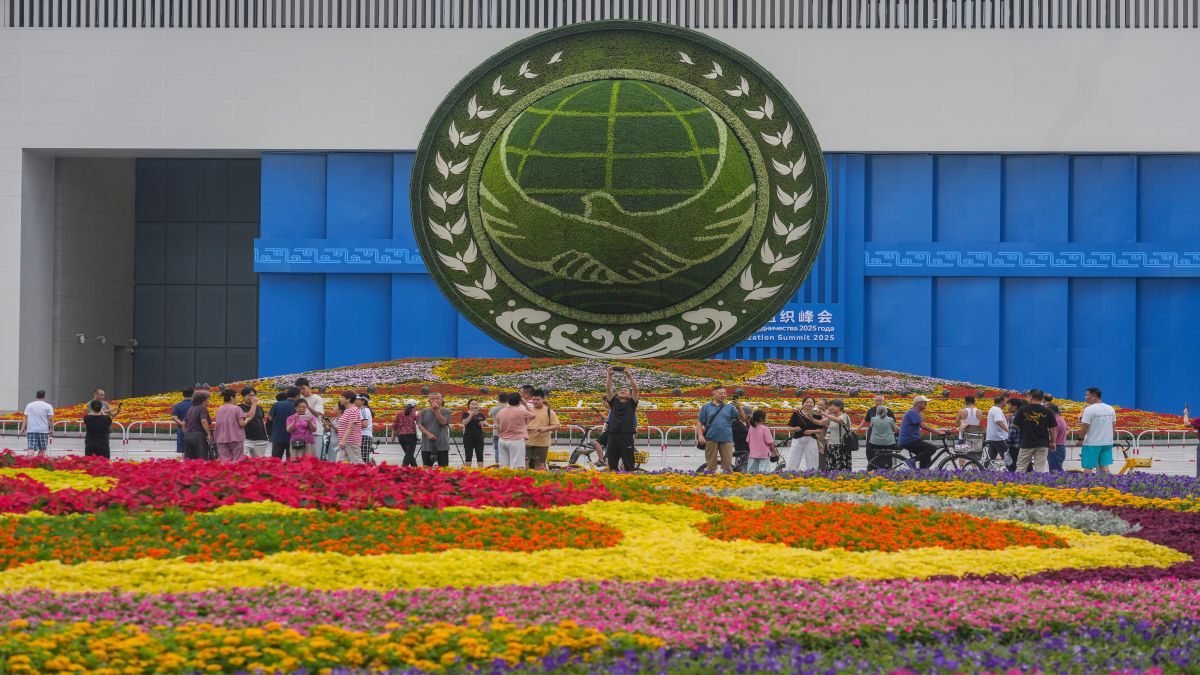Starting tomorrow (August 31), the port city of Tianjin will play host to 20 world leaders, including Prime Minister Narendra Modi and Russia’s Vladimir Putin, as they converge there for the 25th Shanghai Cooperation Organisation (SCO) Summit under the slogan “Promoting the Shanghai Spirit: SCO in Action.”
This year’s SCO is notable for multiple reasons: it will be the largest ever in the organisation’s history. But additionally, this SCO is notable because of its location — Tianjin. After all, China’s capital is Beijing and the SCO as its name suggests was born out of Shanghai.
So, what’s the reason for the SCO being held in this port city of China?
What do we know about Tianjin?
The Chinese city of Tianjin isn’t well-known to the Western world, but it is of great importance to the country. With over 15 million people, Tianjin is the third-largest urban area in China after Beijing and Shanghai. It has traditionally acted as a port for Beijing, 120 km to the north-west.
In fact, there’s a very famous saying in China: “If you want to understand 5,000 years of Chinese civilisation look at Xi’an, 1,000 years look at Beijing, modern China look at Tianjin.”
Between 1860 and 1945, Tianjin was home to nine foreign-controlled concessions, or outposts, functioning side by side, as well as being temporarily home to a multinational military government.
Today, Tianjin is a modern trade hub. Its port is the world’s tenth biggest. But Tianjin isn’t just known for its port. It serves as a rice-supplying hub to Beijing. Additionally, it is a major industrial base for manufacturing, car-making and petrochemicals.
It is also known as a high-tech centre, with a ready supply of hundreds of thousands of graduates available from the city’s numerous universities. Interestingly, Tianhe-1A, a supercomputer in China, which was dubbed the fastest in 2010, is also housed at the National Supercomputing Center of Tianjin, China.
Editor’s Picks
Tianjin also houses foreign companies such as Airbus, Motorola and even Mitsubishi. The city has been one of the fastest growing in the world over the past decade.
Tianjin is also believed to have a unique feel — it exhibits different architectural styles owing to which tourists from around the world say they do not even need to leave China to experience the world: it is enough to visit Tianjin.
Tianjin grabbed headlines in August 2015 when two massive explosions took place in the city’s port. Over 170 people died and authorities labelled it as one of the deadliest industrial accidents in Chinese history.
Why is the SCO being held in Tianjin then?
By choosing Tianjin, China is sending a message to the West. It is showing them that despite this place having a foreign past, today it belongs to China and is being used as a stage to challenge Western-led global order.
Cheng Yongmin, director of the Research Centre of the Tianjin Academy of Social Sciences, notes that choosing Tianjin reflects the recognition of its contribution to national development. “Tianjin is a strategic hub of the Belt and Road Initiative. Here, maritime and land routes intersect, the China–Mongolia–Russia corridor begins, and the New Eurasian Land Bridge, linking China, Central Asia, and Europe, passes through. Developed infrastructure, rich experience in hosting international events, and an open-door policy make the city a ‘super-hub,’” said Cheng Yongmin to Kazinform News Agency.
Experts also note that Tianjin can, through the SCO platform, strengthen its role as a key Belt and Road hub and expand ties with Central Asia and Eurasia.
How is Tianjin preparing for the big SCO?
In anticipation of the big event, Tianjin has been undergoing major upgrades. The Haihe River, which winds through Tianjin, now glows with enhanced night views thanks to a lighting project covering 217 buildings, 14 bridges and 8.2 km of waterfront.
Roads have also been smoothened while a team of nearly 1,000 youth volunteers from local universities have been trained in diplomatic etiquette, emergency response and language services — thereby helping to support the SCO Summit.
What can be expected from this year’s SCO?
China will welcome 20 world leaders tomorrow at Tianjin. These include India’s Narendra Modi, Russia’s President Vladimir Putin, Iran’s President Masoud Pezeshkian, Pakistan’s PM Shehbaz Sharif, Belarus President Alexander Lukashenko, Kazakhstan’s President Kassym-Jomart Tokayev, Uzbekistan’s President Shavkat Mirziyoyev, Krygyz President Sadyr Japarov and Tajik President Emomali Rahmon.
Turkey’s President Recep Tayyip Erdogan, Myanmar’s military chief Min Aung Hlaing, Nepal’s Prime Minister K P Sharma Oli, Indonesia’s President Prabowo Subianto, Malaysia’s Prime Minister Anwar Ibrahim and the Maldives’ President Mohamed Muizzu are among other leaders expected to attend.
United Nations Secretary-General Antonio Guterres and the Association of Southeast Asian Nations (ASEAN) Secretary-General Kao Kim Hourn will also attend the Summit.
This year’s summit comes amid Russia’s ongoing war in Ukraine, the Israel-Hamas war in Gaza as well as US President Trump’s global trade war. Manoj Kewalramani, chairperson of the Indo-Pacific Studies Programme at the Takshashila Institution in Bangalore, told Al Jazeera, “The summit is significant because I think that there is a belief amongst many that multilateralism is facing existential threats because of the United States’ policies and that SCO countries still stand for multilateralism and not for unilateralism.”
Alejandro Reyes, adjunct professor at the Department of Politics and Public Administration at the University of Hong Kong, also added that the significance lies in the optics and symbolism of the summit with China as the host. “This is a time when the US is burning bridges with almost every country. So in President Xi’s mind, it is a good time for China to position itself as a world power by showcasing it has productive relations with many countries,” he told Al Jazeera. “China always tries to make friends where it can.”
With inputs from agencies
End of Article

)

